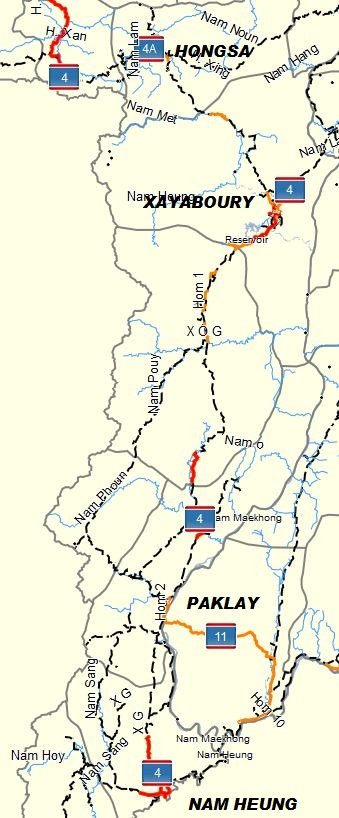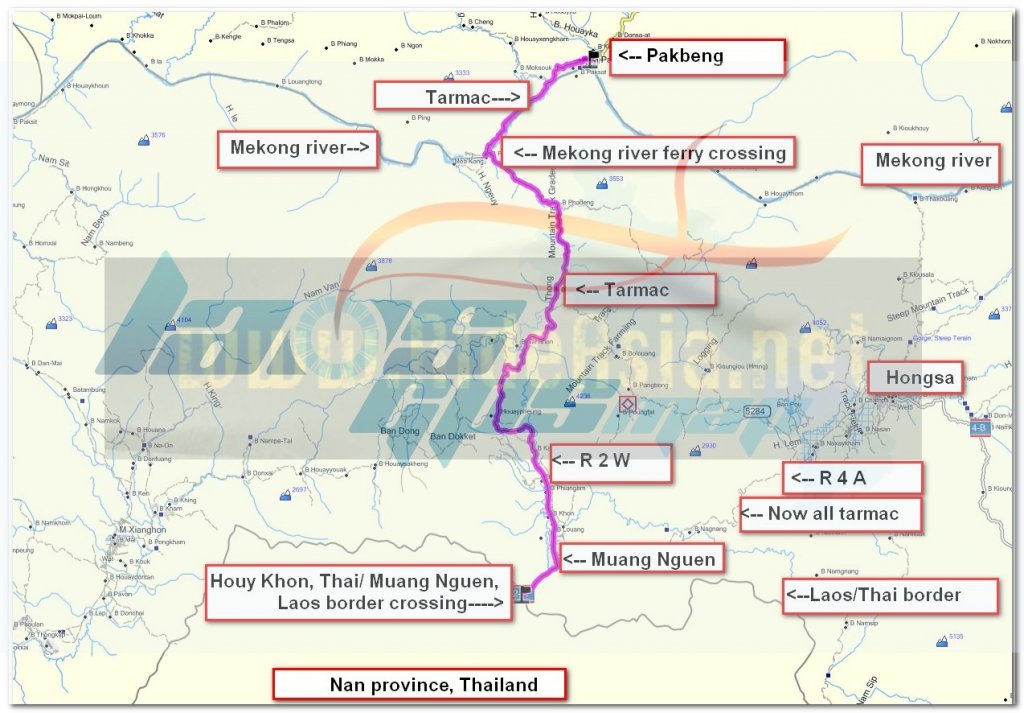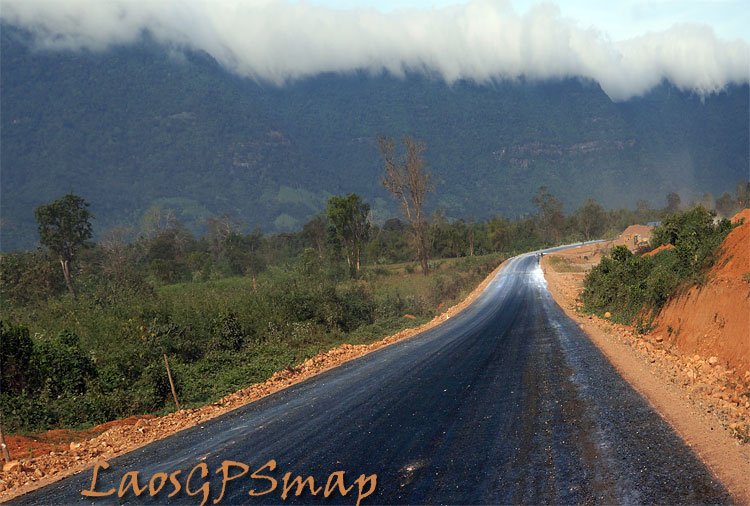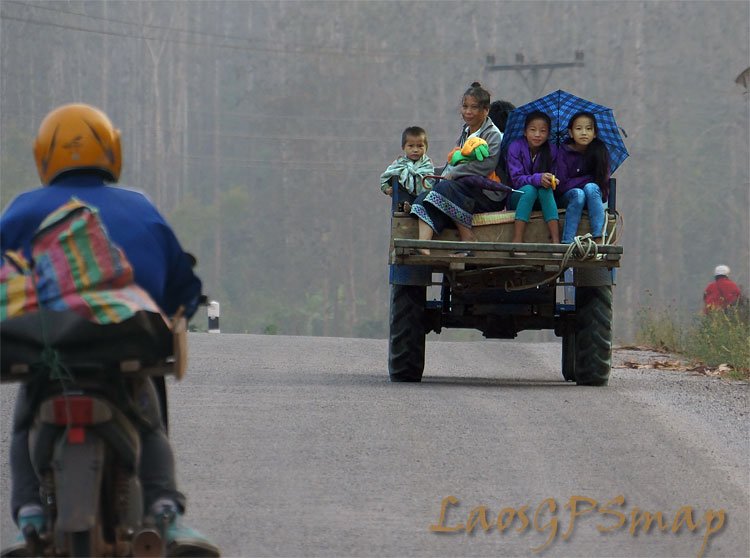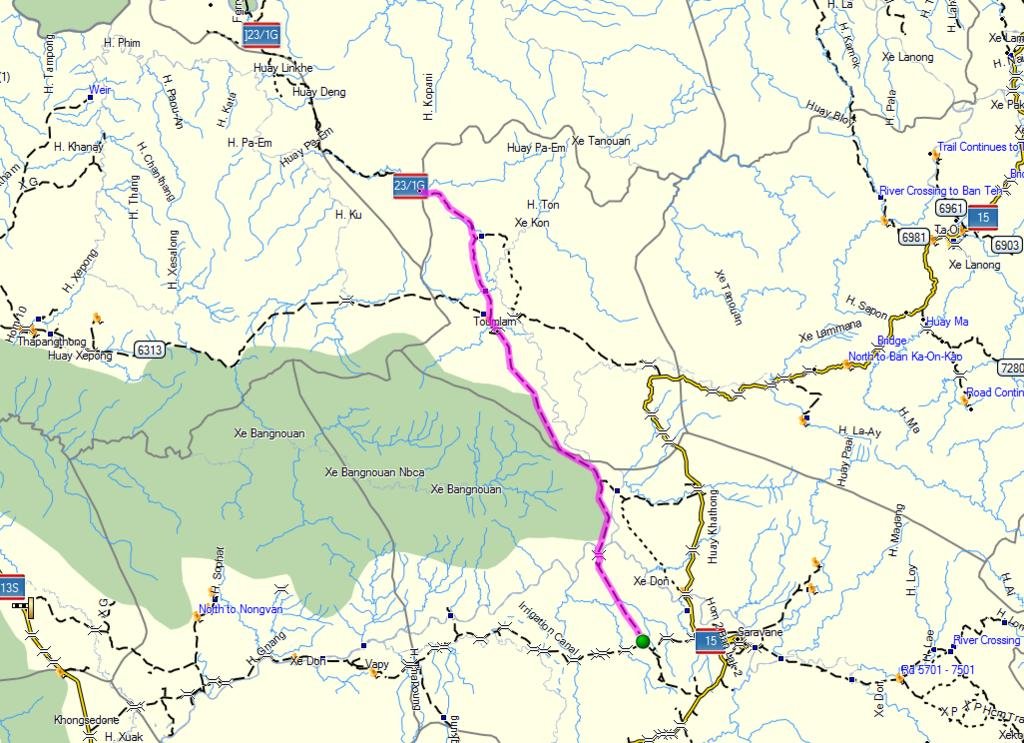Lone Rider
Blokes Who Can
Highway 14 (A, B, C, A1).

Construction of the new road (Rd 14 A) west of the Mekong from highway 16 (Vangtao to Pakxe) to Champasack (Wat Pou) is going fast and it is expected that in a few months the whole road is asphalt.

From Wat Pou there is a good dirt road running further south up to the Cambodia border passing through the Sukhuma and Moonlapamok districts.

At Moonlapamok there is a big junction with the road to the east going to the ferry crossing (car ferry) linking with Rd 13, to the south goes to the border with an option to cross over to Don Kong (bikes only) while the road to the west goes in the direction of the border with Thailand

Below is a screenshot from Google Earth which shows the new road shown from Pakse to Champassack, Sukhuma, Moonlapamok, crossing the Mekong and on to Don Kong.


Construction of the new road (Rd 14 A) west of the Mekong from highway 16 (Vangtao to Pakxe) to Champasack (Wat Pou) is going fast and it is expected that in a few months the whole road is asphalt.

From Wat Pou there is a good dirt road running further south up to the Cambodia border passing through the Sukhuma and Moonlapamok districts.

At Moonlapamok there is a big junction with the road to the east going to the ferry crossing (car ferry) linking with Rd 13, to the south goes to the border with an option to cross over to Don Kong (bikes only) while the road to the west goes in the direction of the border with Thailand

Below is a screenshot from Google Earth which shows the new road shown from Pakse to Champassack, Sukhuma, Moonlapamok, crossing the Mekong and on to Don Kong.














